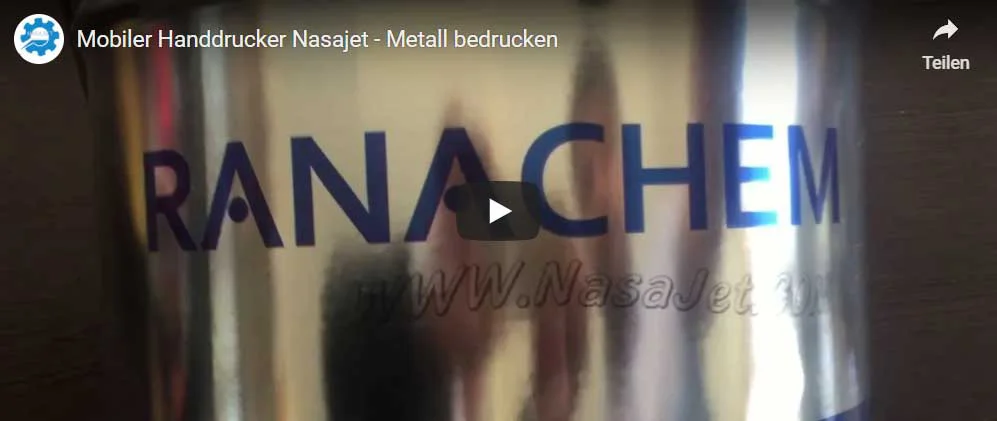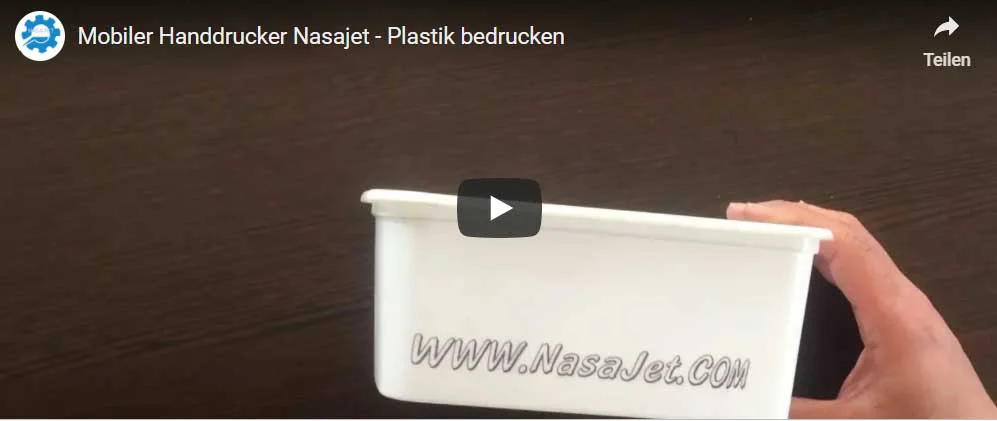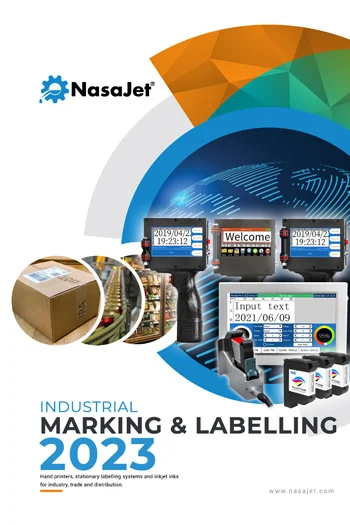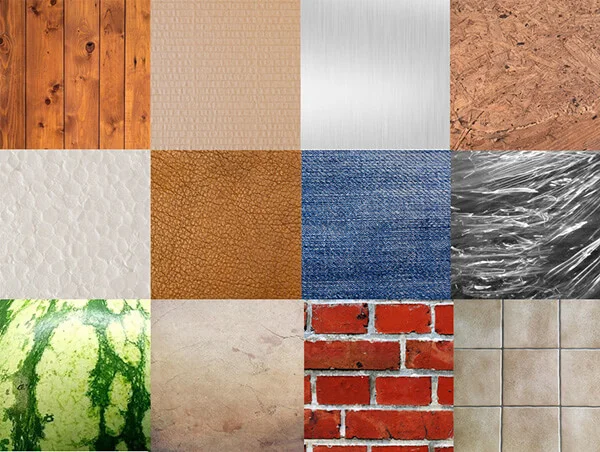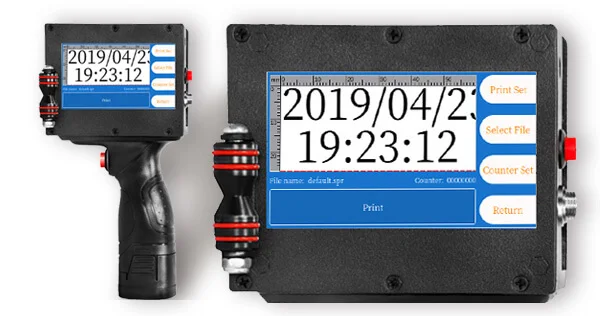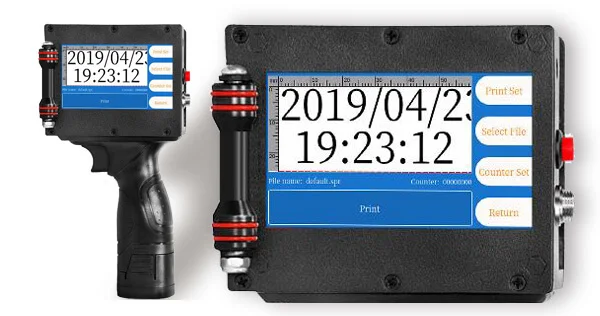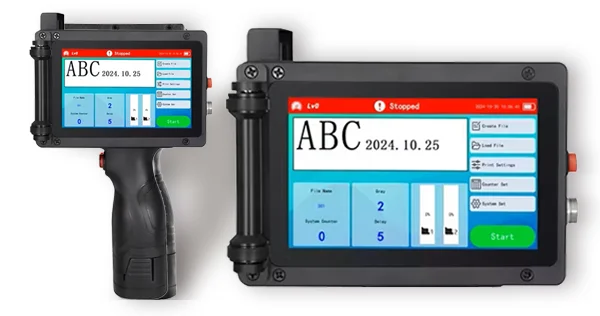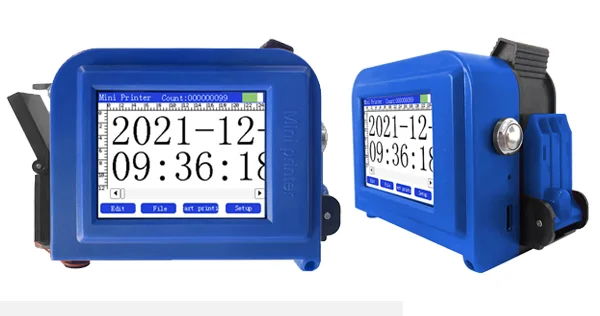-
Geotechtronics GmbH
Pollinger Str. 3 • D-82362 Weilheim i.OB -
Office hours
Mo-Sa: 9:00-18:00
Portable printers in production, warehouse and shipping
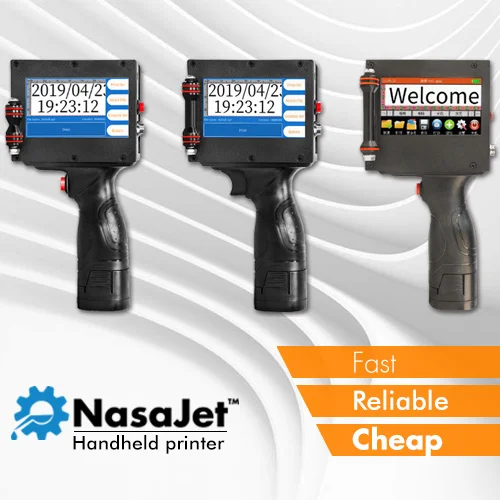
A portable printer is usually a compact or even miniaturised version of a normal desktop printer. While the large (A4) models mostly use inkjet technology, smaller models often use thermal transfer as the printing principle. Portable printers are used where there is little space for more extensive IT equipment (for example in cash register systems), of course also when travelling as a companion for the laptop or for special printing tasks such as in the warehouse or in shipping.
Adhesive labels are still frequently used in production, warehousing or shipping. These adhesive labels are used to mark certain products or objects with related information. This can be addresses on shipping cartons, stickers with serial numbers on the bottom of equipment or shelf life information for cans and food packaging. For many of these applications, however, the use of such labels is cumbersome, time-consuming and expensive. Thermal transfer paper and adhesive labels on continuous rolls are not cheap and also the well-known disadvantages such as fading of the print image over time actually speak against this method in industrial use. As a rule, a portable printer can also only print on a certain paper format, which is not very flexible.
Handheld printer instead of portable printer
With modern inkjet guns, an economical and efficient alternative is now available for many applications. Hand printers with inkjet technology look similar to the former price labelling machines in supermarkets. Instead of issuing labels, however, they print directly printed directly onto an object located under the device. The hand printer is simply pulled along the object.
The following YouTube videos set cookies as soon as they are clicked on. By clicking, you agree to the setting of cookies by YouTube.
Metal
Plastic
The data to be printed is conveniently created on the computer beforehand - in very expensive models also via a built-in touchscreen. The usual scope of functions of such devices is the printing of multi-line text in various sizes, but graphics and, of course, barcodes can also be created in this way. Convenience functions such as automatic serial numbers or date information make it unnecessary to constantly change the print template.
The great advantage of such portable hand printers, however, is their independence from the material to be printed. Since the ink is "thrown" onto the material without contact, almost any surface can be printed on. Rough surfaces and unevenness are also no problem. A hand printer can therefore print on paper, cardboard, wood, plastic (sewage pipes, power cables,...), plywood, textiles, cloths, CDs, DVDs, canvas, cotton, glass, concrete (e.g. sewer pipes, concrete blocks, concrete blocks, etc.), etc. (e.g. sewer pipes, concrete blocks, concrete bollards), metal (rims, cans, canisters, barrels), foil (stretch film, plastic bags), sheet metal, leather, rubber (carpet backing, hoses, cables), ceramics (tiles), porcelain, synthetic resin, foams (PUR foam, cold foam, composite foam, PE foam) or even organic substrates (plants, melons and other foodstuffs). There are also special inks for many other applications, such as fluorescent, waterproof, UV-resistant, etc.
The NasaJet® - The portable printer for countless applications
Our NasaJet® is the optimal alternative to adhesive labels or a portable printer in general for many applications. The working speed can be accelerated in a targeted manner and printing costs are reduced in general. Many typical processes in warehousing, shipping or production can be optimised in this way. The NasaJet® is a compact and lightweight device for fatigue-free working, even over longer periods of time. Compared to many competing products, it also has a very economical purchase price.






